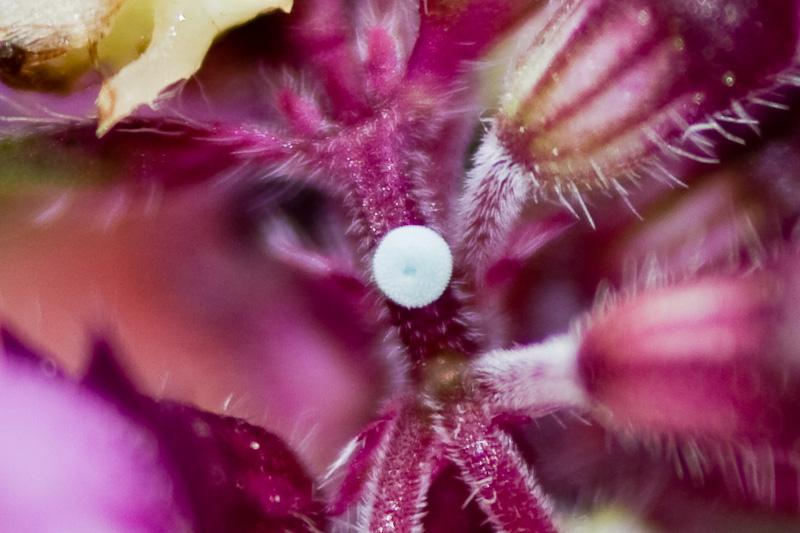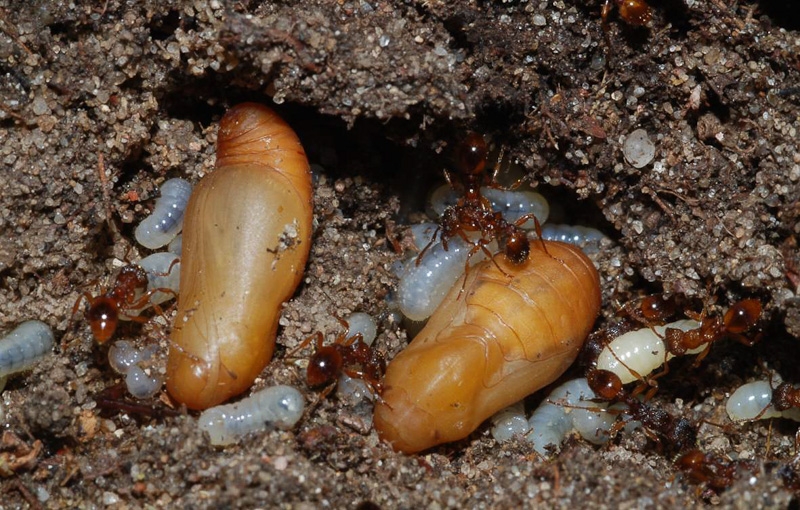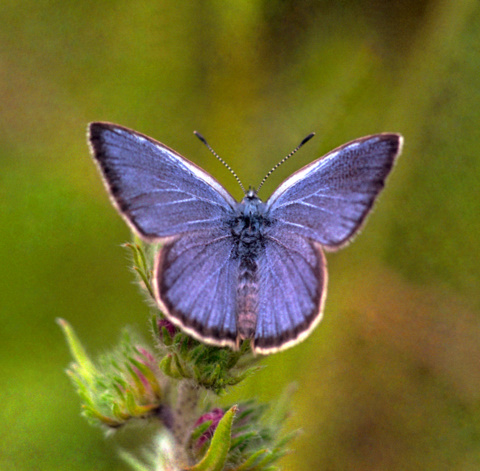Social Parasitism : Blue Butterflies in Ant Colonies
Biology 342 Fall 2011
Ellen Levkoy & Rachel Strominger
Ontogeny


Ontogeny generally investigates the development of an organism. The different forms during different stages of its development inform how the behavior develops [1]. In Maculinean butterfly parasitism of the Myrmica ant colonies (myrmecophilia), we trace the development of the parasitic behavior of the butterfly during its life cycle.
Developmental stages corresponding to parasitism

The Maculinea first use chemical mimicry of ant larvae to infiltrate the colony during its larval stage by tricking ants into taking them for ant larvae that have been left outside the nest [5]. While continuing with this strategy, the larvae begin to mimic the stridulations of the queen ant, allowing them preferential feeding and protection over worker ants, which constitute the majority of the population. The Maculinea continue to use both mimetic signals during its coccoon stage. Maculinea are incapable of surviving to adulthood without the aid of Myrmica ant colonies. [2a]

Strategic Egg Drop: Female butterflies lay their eggs on plants close to Myrmica ant colonies [5].
Larvae: When the larvae hatches, it is a tiny caterpillar that drops to the ground near the ant nest. Ants approach it, and it secretes a sticky substance that chemically mimics the ant larvae, sending a semiochemical message. The ants then "adopt" it, bringing it back to the colony to protect and feed it. Inside the ant nest, the larvae mimic the sounds of the queen ant. These stridulations elicit preferential treatment by the worker ants for the butterfly larvae over the ant larvae, which make worker ant sounds that are acoustically different from the queen ant sounds, elevating the social status of the Maculinea within the caste structure of the colony.
Pupae: In the next life stage, the Maculinea undergoes a coccoon stage and continues to emit chemically and acoustically mimetic signals, which serve the same purpose but are necessarily different because of the altered Maculinean form during metamorphosis.
Adult: After overwintering in the protection of the nest, Maculinea butterflies emerge from their coccoons and fly away from the ant colony, never returning. Females are not known to return to their birthplace to lay eggs. [2a]
image 1: Maculinea ovum
image 2: Maculinea larvae being fed by a Myrmica worker.
image 3: Maculinea pupae
image 4: Maculinea rebeli adult.